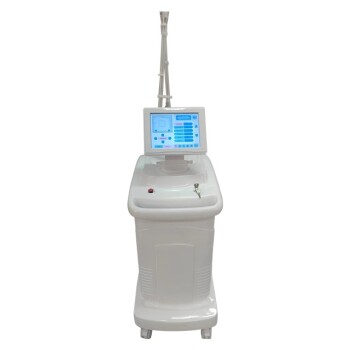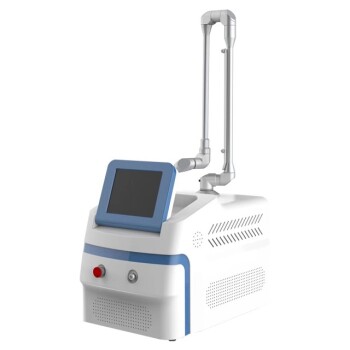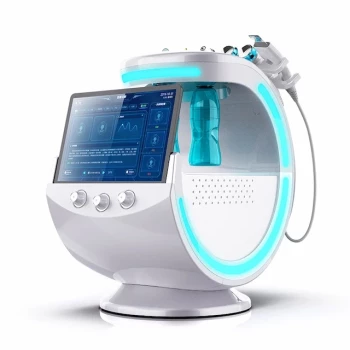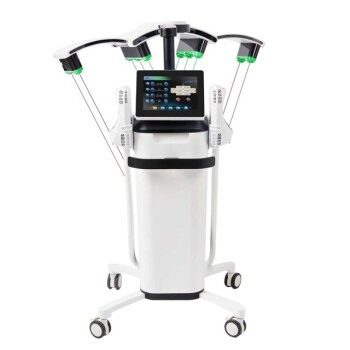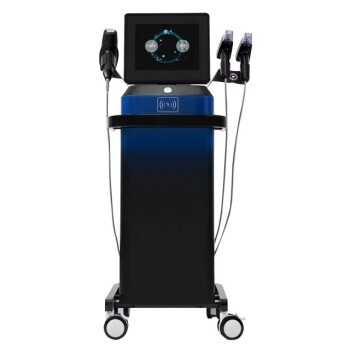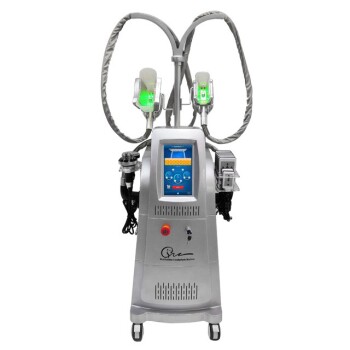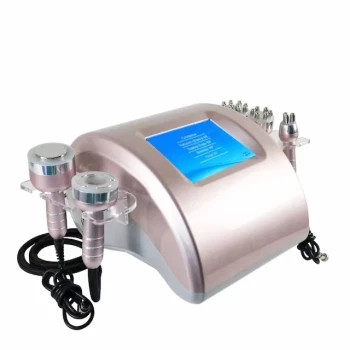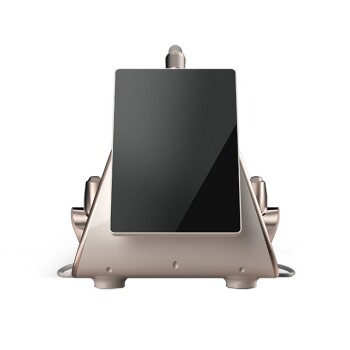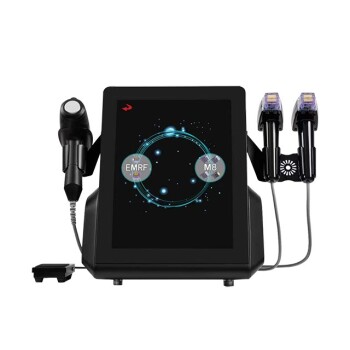While highly effective, the primary downsides of a CO2 laser treatment are its significant required downtime and the potential for serious side effects like permanent changes to your skin's pigmentation. The intensity that makes it so powerful for skin resurfacing is also the source of its most significant risks and demanding recovery period.
A CO2 laser offers some of the most dramatic results in skin rejuvenation, but this power comes at a cost. The core trade-off is accepting a difficult recovery process and concrete medical risks in exchange for a profound level of renewal.
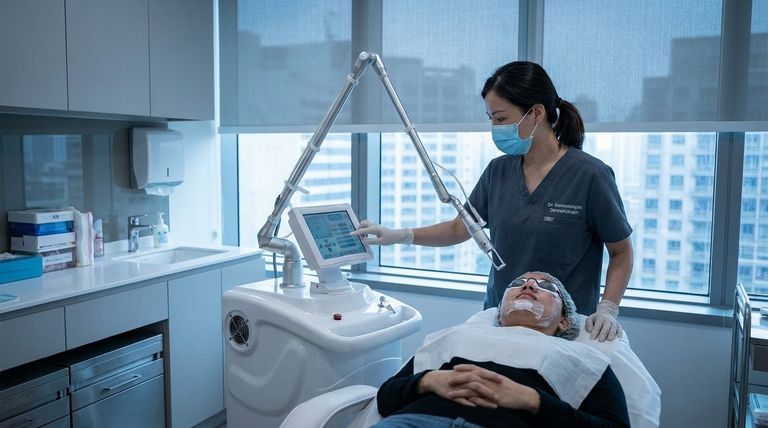
The Primary Consideration: Significant Downtime
The most immediate and unavoidable downside of a CO2 laser is the recovery period. This is not a "lunchtime" procedure; it is a controlled medical injury to the skin that requires substantial healing time.
What to Expect Immediately After
Following the treatment, your skin will be red, swollen, and feel similar to a severe sunburn. Oozing and crusting are common parts of the initial healing phase as the skin barrier begins to repair itself.
The Healing Timeline
Initial healing, where you will likely need to be home from work, can last anywhere from 5 to 14 days, depending on the intensity of the treatment. Residual redness or pinkness can then persist for several weeks or even months as the new skin fully matures.
Impact on Your Lifestyle
During the acute healing phase, you must follow a strict aftercare routine provided by your practitioner. Furthermore, your new skin will be extremely sensitive to the sun for up to six months, requiring diligent use of sunscreen and sun avoidance to protect the results.
Key Medical Risks to Understand
Beyond the recovery process, there are notable medical risks that must be carefully considered, especially in relation to your specific skin type and the skill of your provider.
Changes in Skin Pigmentation
This is one of the most serious potential side effects. The laser can trigger hyperpigmentation (darkening of the skin) or hypopigmentation (lightening of the skin). This risk is significantly higher for individuals with darker skin tones, as their melanocytes (pigment-producing cells) are more reactive.
Risk of Infection
Because a CO2 laser ablates (removes) the outer layer of skin, it creates a temporary vulnerability to infection. Bacterial, viral (such as a reactivation of cold sores), or fungal infections can occur if the skin is not kept meticulously clean during the healing process.
Potential for Scarring
While rare when performed by a qualified and experienced practitioner, there is a risk of scarring. This can result from the laser being used too aggressively, improper healing, or an infection that damages the new tissue.
Understanding the Trade-offs
A successful outcome is not guaranteed and depends heavily on managing the associated variables. The downsides are not just side effects but practical trade-offs you must accept.
Operator Skill is Critical
The results and safety of a CO2 laser treatment are exceptionally dependent on the skill of the person operating it. An inexperienced provider significantly increases all of the risks, from poor aesthetic outcomes to permanent scarring. This is not a device for novice hands.
The Financial and Time Investment
CO2 laser treatments are expensive and may require multiple sessions to achieve the desired outcome. When you factor in the cost of the procedure plus the time taken off work for recovery, the total investment is substantial.
The Burden of Aftercare
The success of your treatment is highly dependent on your own diligence. Failing to adhere to the strict aftercare protocol—including cleansing routines, moisturization, and absolute sun avoidance—can compromise your results and increase the risk of complications.
Making the Right Choice for Your Goal
To decide if a CO2 laser is right for you, weigh its power against your tolerance for its demands.
- If your primary focus is correcting severe wrinkles, deep acne scars, or significant sun damage: A CO2 laser is a gold-standard option, but you must be fully prepared for the demanding recovery and associated risks.
- If your primary focus is a mild refresh with minimal downtime: You should explore less aggressive options like a Fraxel laser, microneedling, or chemical peels, which offer less dramatic results but with a much easier recovery.
- If you have a darker skin tone: It is absolutely critical to consult a board-certified dermatologist with extensive experience treating skin of color to minimize the significant risk of pigmentation changes.
Understanding these downsides is the first step toward making an informed, confident decision about your skin health.
Summary Table:
| Downside | Key Details |
|---|---|
| Downtime | 5-14 days of initial recovery; residual redness for weeks/months. |
| Pigmentation Risks | Potential for permanent hyperpigmentation or hypopigmentation. |
| Infection Risk | Open wound requires meticulous aftercare to prevent infection. |
| Scarring Risk | Rare but possible, especially with an inexperienced provider. |
| Aftercare Burden | Strict sun avoidance and skincare routine for up to 6 months. |
Considering a Professional Laser Treatment?
While a CO2 laser carries significant risks, BELIS offers a range of advanced, professional-grade medical aesthetic equipment designed for safety and efficacy. Our solutions help medical aesthetics clinics and premium beauty salons deliver powerful results with managed downtime.
Partner with BELIS to:
- Enhance Treatment Safety: Utilize reliable, technologically advanced equipment.
- Expand Your Service Menu: Offer a variety of treatments tailored to different client needs and risk tolerances.
- Ensure Client Satisfaction: Achieve excellent outcomes with professional-grade devices.
Let's discuss the right technology for your practice. Contact our experts today for a personalized consultation.
Visual Guide

Related Products
- Fractional CO2 Laser Machine for Skin Treatment
- Hydrofacial Machine with Facial Skin Analyzer and Skin Tester
- Pico Picosecond Laser Machine for Tattoo Removal Picosure Pico Laser
- Hydrafacial Machine with Facial Skin Analyzer Skin Tester
- Hydrafacial Machine Facial Clean Face and Skin Care Machine
People Also Ask
- Who is not a good candidate for CO2 laser? Avoid Complications and Ensure Safe Treatment
- How often should you do fractional CO2 laser? The 4-6 Week Rule for Optimal Results
- What does a CO2 laser do to your face? Achieve Profound Skin Resurfacing & Renewal
- What is a CO2 fractional laser good for? Dramatic Skin Rejuvenation for Wrinkles & Scars
- How does fractional CO2 laser work? The Science Behind Powerful Skin Renewal
